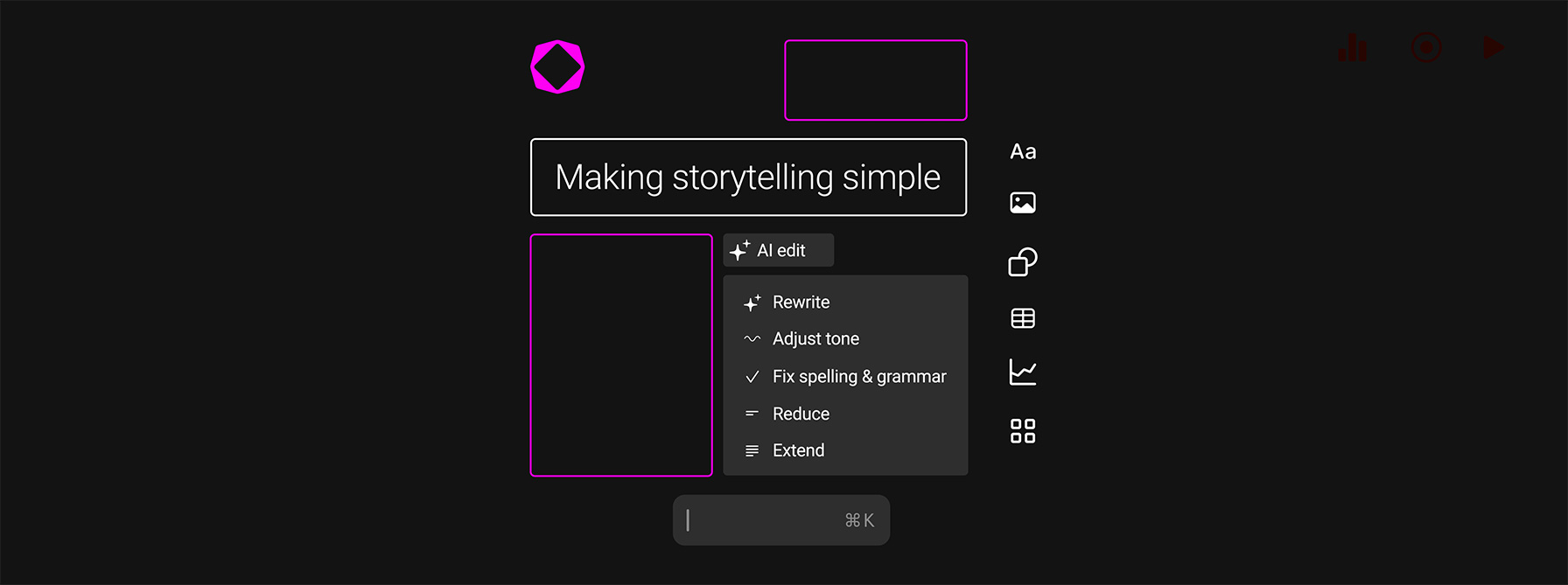Tome utilises AI to turn complex data into compelling stories to make an emotional impact with clients and investors. Here’s how you can use it.
Financial storytelling often feels like navigating a labyrinth of charts and reports, inducing yawns faster than a market downturn. But what if you could elevate your financial narrative, turning complex data into a compelling story that captivates investors? Enter Tome, the AI storytelling tool poised to revolutionise your approach without unnecessary frills.
What is Tome?
Consider Tome as a sophisticated amalgamation, merging GPT-4’s linguistic prowess with Dall-E 2’s visual acumen. Present it with a prompt, such as your company’s vision for fintech disruption, and it generates narratives that transcend typical financial discourse.
Tome’s magic lies in its ability to tap into human emotion. It understands that financial decisions aren’t driven solely by logic, but by a complex tapestry of hopes, fears, and aspirations. Tome helps you to weave narratives that resonate with audiences on a deeper level.
Speaking to The Dubs Agency, senior graphic designer, Tom Bradshaw, explains, “Tome makes it easy to create a sophisticated visual presentation in a relatively quick time period. Enter a simple prompt and it produces a presentation right away.” Bradshaw continues, “AI features such as the ability to adjust tone, extend or shorten copy are helpful.”
Why should you use Tome?
Now, why should financial marketers consider integrating Tome into their arsenal? Let’s dissect the advantages:
- From data deluge to persuasive narrative: Escape the monotony of data slides. Tome breathes life into numerical intricacies, transforming your growth trajectory into a dynamic narrative that outshines traditional presentations.
- Tailored brand persona: For brands lacking a distinctive voice, Tome steps in. Seeking a witty and disruptive image? It crafts intelligent and humorous remarks. Aiming for the embodiment of stability? Tome weaves narratives of financial sagacity, leaving a lasting impression.
- Memorable content: Move beyond forgettable presentations. Tome taps into emotional cues, constructing experiences that resonate.
- Efficiency meets creativity: Marketers face perpetual time constraints. Tome acts as an efficient creative partner, generating tailored narratives and visuals fast.
Tom shares other benefits of Tome, “It can be used for training purposes, e.g. brand guidelines, event presentations and webinars.” He continues, “Anyone on the team can use it. It doesn’t need a designer to do much fixing once someone is finished. I spend a bit of time doing this in Google Slides.”
Not a perfect tool
However, let’s not be overly enamored with Tome. It’s a tool, not a silver bullet; it necessitates your guidance. The narratives it produces are raw materials, awaiting your input. Investors still seek a human touch, a genuine connection that AI cannot replicate. Think of Tome as your AI-assisted collaborator, streamlining the creative process while you, as the orchestrator, craft the masterpiece.
“ Creating a presentation from a one-line prompt inevitably results in a very simplified presentation. It still takes time to rework and create a functional presentation you’d want to share.”
Bradshaw continues, “If you require simple charts and tables, it’s great. However, for the work we do, like complex tables and charts, the level of functionality and personalisation just isn’t there. This is the case across a lot of AI image generators. The output is not usable yet. For generic images such as a laptop or the Harbour Bridge, the quality is so bad we wouldn’t use it.”
Final thoughts
Is Tome the Hemingway of pitch decks? Not quite, but it stands as a potent tool for injecting sophistication into financial marketing. It’s an invitation to break away from mundane data-centric presentations and allow your brand’s narrative to shine. In an era saturated with information, what resonates isn’t just numbers; it’s the carefully curated narrative.
Overall, Bradshaw recommends using Tome to create simple presentations featuring text, image, a simple chart or table. “Use it to share among your team and with clients; it’s perfect for these tasks,” said Bradshaw, adding, “If you need anything bespoke such as an infographic, complex charts or tables, you’ll need a designer’s input.”









